I am trying to show percentual change between groups. As a base approach, I wanted to compare the all groups' means to a defaut value, and just show those differences in [%]. I wish however to somehow represent the variability within the means, let's say in terms of standard deviations. But, I am not sure how to show this and actually if it does make sense?
Here is my example of simple bar plotting of the means and error bars, calculated as mean and sd:
dd <- data.frame(id = rep(c(1,2,3), 2),
vol = c(10,5,8,11,10,9),
reg = rep(c('control', 'new'), each = 3))
# calculate mean and sd
sum_dd <- dd %>%
group_by(reg) %>%
summarize(V_mean = mean(vol, na.rm = T),
V_sd = sd(vol, na.rm = T)) #
# Plot bar plot and error bars
sum_dd %>%
ggplot(aes(x = reg,
y = V_mean)) +
geom_bar(stat = 'identity') +
geom_errorbar(aes(x=reg,
min=V_mean-V_sd,
ymax=V_mean+V_sd)) #
This plotting generates nice bar plot with error bars, wherw it is obvious what are my means and sd for each group:
But, how to express that the group new is a % change from control?
Here, I need to first calcualte the % change from control to new. Then I can plot the bar of the percentual change. But from which values I can calculate something like standard deviations to plot and show the variability (using e.g., error bar) in my results ?
sum_dd %>%
group_by(reg) %>%
# Calculate % change from a to b value
mutate(control_mean = 7.67,
perc_change = (10-7.67)/7.67 * 100) %>%
filter(reg !='control') %>%
ggplot(aes(x = reg,
y = perc_change)) +
geom_bar(stat = 'identity') #+
# from which values calculate the error bar??
geom_errorbar(aes(x=reg,
min=V_mean-V_sd,
ymax=V_mean+V_sd)) # +
Thanks for your thoughts!


